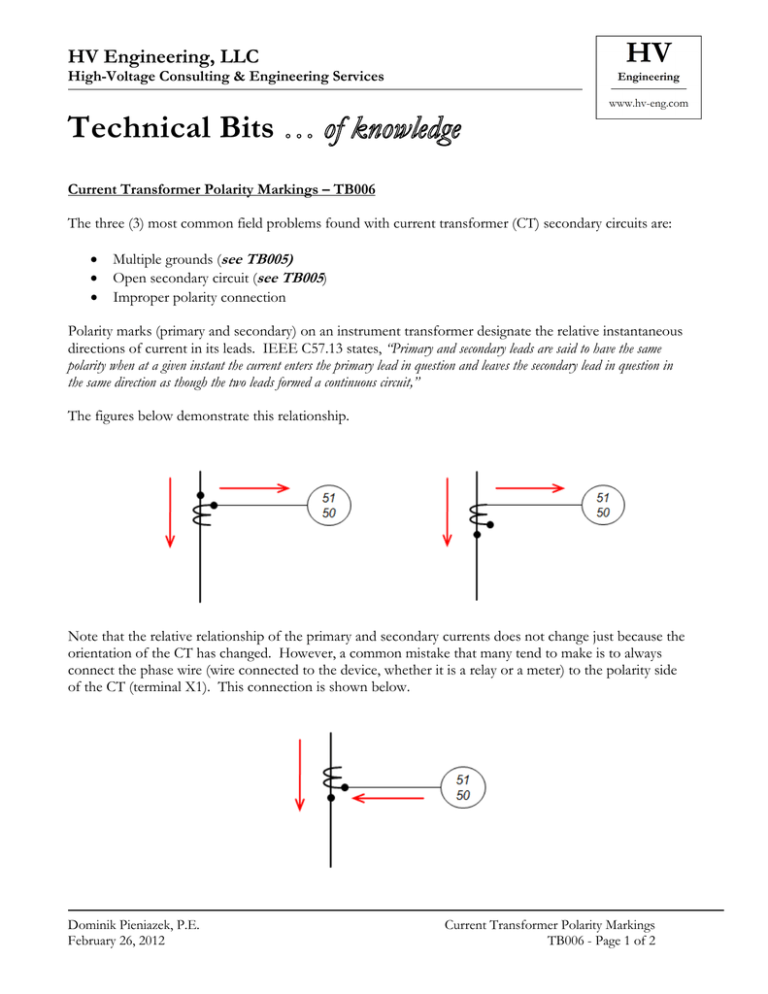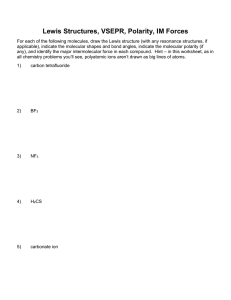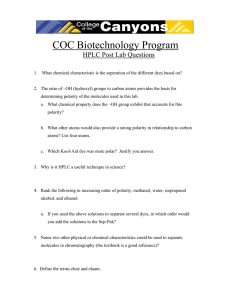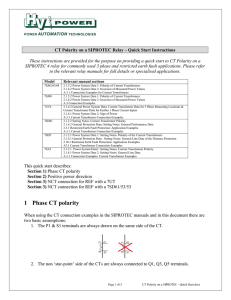CT Polarity Markings & Connections | HV Engineering Guide
advertisement

HV Engineering, LLC High-Voltage Consulting & Engineering Services Technical Bits Current Transformer Polarity Markings – TB006 The three (3) most common field problems found with current transformer (CT) secondary circuits are: • • • Multiple grounds (see TB005) Open secondary circuit (see TB005) Improper polarity connection Polarity marks (primary and secondary) on an instrument transformer designate the relative instantaneous directions of current in its leads. IEEE C57.13 states, “Primary and secondary leads are said to have the same polarity when at a given instant the current enters the primary lead in question and leaves the secondary lead in question in the same direction as though the two leads formed a continuous circuit,” The figures below demonstrate this relationship. Note that the relative relationship of the primary and secondary currents does not change just because the orientation of the CT has changed. However, a common mistake that many tend to make is to always connect the phase wire (wire connected to the device, whether it is a relay or a meter) to the polarity side of the CT (terminal X1). This connection is shown below. Dominik Pieniazek, P.E. February 26, 2012 Current Transformer Polarity Markings TB006 - Page 1 of 2 HV Engineering, LLC High-Voltage Consulting & Engineering Services Technical Bits In this case the current seen by the device (in our example it is a 51/50 relay) is 180° out of phase. In this example, where the device is not direction sensitive, the out of phase current would probably not impact operation of the relay (other than perhaps the waveform recording if this is a microprocessor relay). However, if the device is direction sensitive (i.e. directional overcurrent relay, power directional protection, differential protection, distance protection, metering, etc.) an improperly connected CT lead would result in the protective relay NOT operating for a fault in the protective zone and operating for a fault that is outside of the protective zone. It should be noted that this connection to the CT can be rectified by reversing the polarity at the relay (if the single CT secondary lead is connected directly to a dedicated CT input. However, the example below (where the CT secondary leads are summed prior to connection at the protective relay) demonstrates an installation where the improper connection at the CT secondary terminals cannot be rectified at the protective relay Equipment manufacturers and end-users have various reasons for specifying the orientation of the CT (polarity marks facing towards or away from equipment). A typical application is for the primary CT polarity mark to face away from the equipment. There are cases, however, that may justify having the CT primary polarity marks face towards the equipment. An example of this is low and medium-voltage switchgear. Having the primary CT polarity marks face towards the breaker allows for a visual inspection to confirm orientation of the CTs when the switchgear breaker is removed from the cubicle. For more information on CT applications, see IEEE C37.100 “IEEE Guide for the Application of Current Transformers Used for Protective Relaying Purposes” Dominik Pieniazek, P.E. February 26, 2012 Current Transformer Polarity Markings TB006 - Page 2 of 2



